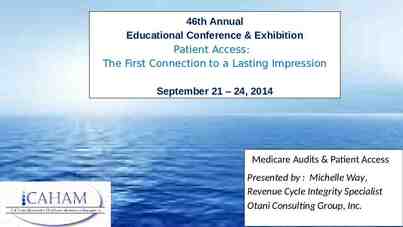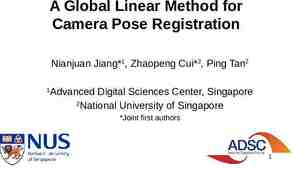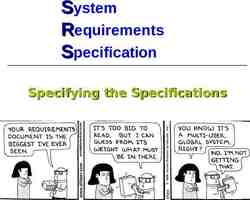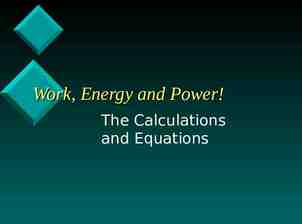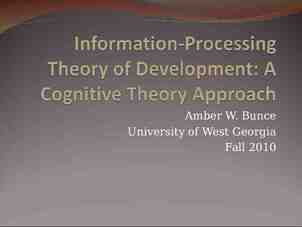Correlation & Regression
50 Slides998.85 KB

Correlation & Regression

The Data http:// core.ecu.edu/psyc/wuenschk/SPSS/SPSS -Data.htm Cyberloafing See Correlation and Regression Analysis: SPSS Master’s Thesis, Mike Sage, 2015 Cyberloafing Age, Conscientiousness

Analyze, Correlate, Bivariate

Pearson Correlations Cyberloafing Pearson Correlation Cyberloafing 1 -.563** .001 .000 51 51 51 -.462** 1 .143 N Age Sig. (2-tailed) .001 N Pearson Correlation Conscientiousness Conscientiousness -.462** Sig. (2-tailed) Pearson Correlation Age .317 51 51 51 -.563** .143 1 .000 .317 51 51 Sig. (2-tailed) N **. Correlation is significant at the 0.01 level (2-tailed). 51

Spearman Correlations Cyberloafing Correlation Coefficient Cyberloafing Sig. (2-tailed) N Correlation Coefficient Spearman's rho Age Sig. (2-tailed) N Correlation Coefficient Conscientiousness Sig. (2-tailed) N **. Correlation is significant at the 0.01 level (2-tailed). Age Conscientiousness 1.000 -.431** -.551** . .002 .000 51 51 51 -.431** 1.000 .110 .002 . .442 51 51 51 -.551** .110 1.000 .000 .442 . 51 51 51

Analyze, Regression, Linear

Statistics

Plots

Model Summaryb Model R R Square Adjusted R Square 1 .563a .317 a. Predictors: (Constant), Conscientiousness Std. Error of the Estimate .303 b. Dependent Variable: Cyberloafing 2 r r .317 .563 r .1 is small, .3 medium, .5 large 7.677

ANOVAa Sum of Squares Model Regression 1339.801 1 df 1 Residual 2887.532 49 Total 4227.333 50 Mean Square F Sig. 1339.801 22.736 .000b 58.929 a. Dependent Variable: Cyberloafing b. Predictors: (Constant), Conscientiousness

Coefficientsa Model Unstandardized Coefficients B 1 (Constant) Conscientiousness a. Dependent Variable: Cyberloafing Std. Error 57.039 7.288 -.864 .181 Standardized Coefficients t Sig. Beta -.563 7.826 .000 -4.768 .000 Cyberloafing 57.039 - .864(Conscientiousness) error tConsc. .864/.181 4.77 SQRT(22.736) SQRT(F)

Residuals Histogram

Graphs, Scatter, Simple, Define

Chart Editor, Elements, Fit Line at Total, Method Linear, Close

Construct a Confidence Interval for the calculator at Vassar

Trivariate Analysis

Statistics

Plots

R 2 Adding Age increased R2 from .317 to .466. Model 1 R R Square .682a .466 Adjusted R Square .443

ANOVA ANOVAa Model 1 Sum of Squares df Mean Square Regression 1968.029 2 Residual 2259.304 48 Total 4227.333 50 F 984.015 20.906 47.069 Sig. .000b

Coefficients Model Unstandardized Coefficients B (Constant) 1 Std. Error 64.066 6.792 Conscientiousness -.779 .164 Age -.276 .075

Unstandardized Coefficients Cyberloaf 64.07 -.78 Consc - .28 Age When Consc and Age 0, Cyber 64.07 Holding Age constant, each one point increase in Consc produces a .78 point decrease in Cyberloafing. Holding Consc constant, each one point increase in Age produces a .28 point decrease in Cyberloafing.

How Large are these Effects? Is a .78 drop in Cyberloafing a big drop or a small drop? When the units of measurement are arbitrary and not very familiar to others, best to standardize the coefficients to mean 0, standard deviation 1. ZCyber 0 1Consc 2Age

More Coefficients t Sig. Beta Constant Conscie Age Correlations Zero-order Partial Part 9.433 .000 -.507 -4.759 .000 -.563 -.566 -.502 -.389 -3.653 .001 -.462 -.466 -.386

Beta Weights ZCyber 0 -.51Consc - .39Age Holding Age constant, each one SD increase in Conscientiousness produces a .51 SD decrease in Cyberloafing Holding Conscientiousness constant, each one SD increase in Age produces a .39 SD decrease in Cyberloafing.

Semi-Partial Correlations The correlation between all of Cyberloafing and that part of Conscientiousness that is not related to Age -.50. The correlation between all of Cyberloafing and that part of Age that is not related to Conscientiousness -.39.

Partial Correlations The correlation between that part of Cyberloafing that is not related to Age and that part of Conscientiousness that is not related to Age -.57. The correlation between that part of Cyberloafing that is not related to Conscientiousness and that part of Age that is not related to Conscientiousness -.47.

Multicollinearity The R2 between any one predictor and the remaining predictors is very high. Makes the solution unstable. Were you to repeatedly get samples from the same population, the regression coefficients would vary greatly among samples

Collinearity Diagnostics Tolerance, which is simply 1 minus the R2 between one predictor and the remaining predictors. Low (.1) is troublesome. VIF, the Variance Inflation Factor, is the reciprocal of tolerance. High (10) is troublesome.

Coefficientsa Model Collinearity Statistics Tolerance VIF Age .980 1.021 Conscientiousness .980 1.021 1

Residuals Residuals Statisticsa Minimum Maximum Predicted Value Mean Std. Deviation N 10.22 35.41 22.67 6.274 51 -17.344 15.153 .000 6.722 51 Std. Predicted Value -1.983 2.032 .000 1.000 51 Std. Residual -2.528 2.209 .000 .980 51 Residual No standardized residuals beyond 3 SD.

Residuals Histogram

Residuals Plot

Put a CI on R 2 http:// core.ecu.edu/psyc/wuenschk/SPSS/SPSS -Programs.htm CI-R2-SPSS.zip -- Construct Confidence Interval for R2 from regression analysis – Using SPSS to Obtain a Confidence Interval f or R2 From Regression -- instructions – NoncF.sav -- necessary data file – F2R2.sps -- see Smithson's Workshop – NoncF3.sps -- syntax file

Open NoncF.sav Enter the observed value of F and degrees of freedom.

Open and Run the Syntax

Look Back at .sav File

Why You Need Inspect Scatterplots Data are at http:// core.ecu.edu/psyc/wuenschk/SPSS/Corr Regr.sav Four sets of bivariate data. Bring into SPSS and Split File by “set.”

Predict Y from X in Four Different Data Sets













